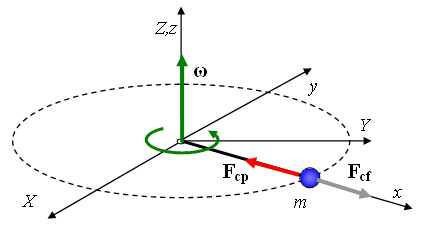
In physics, a force is a vector magnitude that expresses an action that is imprinted on an object in a state of motion or rest. This action involves a change in speed, direction or shape. Its name comes from the Latin fortia.
According to the definition of force, it acts on an object that is capable of modifying its acceleration, that is, varying its speed and trajectory. A force can also cause the deformation of an object and a change in pressure.
In addition to its magnitude and direction, a force is determined by the point of application where it acts on a body.
If the sum of all the forces on a body is zero, then the center of mass undergoes no acceleration. The body can deform under the influence of these forces. For example, the body can stretch due to two opposing forces.
Measurement units
Force is measured in different units of measurement, with the newton (N) being the main unit used in the International System of Units (SI). The newton is defined as the force necessary to provide an acceleration of 1 meter per second squared to an object of mass 1 kilogram.
In addition to the newton, there are other units of force measurement that are used in different contexts, some of which include:
- Pound-force (lbf): It is a unit of force commonly used in the United States and in countries that follow the imperial unit system. It is defined as the force necessary to accelerate a one-pound mass at 32,174 feet per second squared.
- Kilogram-force (kgf) or kilopond (kp): It is a unit used in some countries, especially in Asia. It is defined as the force exerted by gravity on an object with a mass of one kilogram.
- Dyne (dyn): It is a unit of force in the CGS system (centimeter-gram-second). One dyne is the force necessary to accelerate one gram to one centimeter per second squared.
Newton's laws: the relationship between force, mass and acceleration
Newton's laws are three fundamental laws of classical mechanics that describe how forces affect the motion of objects.
 Through Newton's laws the concepts of force, mass and acceleration are related.
Through Newton's laws the concepts of force, mass and acceleration are related.
-
Newton's first law (Law of inertia): This law states that an object at rest tends to remain at rest, and an object in motion tends to maintain its uniform rectilinear motion, unless acted on by an external force. In other words, an object will not change its state of motion unless a net force acts on it.
-
Newton's Second Law (Law of Force and Acceleration): This law states that the acceleration of an object is directly proportional to the net force acting on it and inversely proportional to its mass.
-
Newton's third law (Law of action and reaction): This law states that for every action, there is a reaction of equal magnitude but in the opposite direction. That is, when object A exerts a force on object B, object B exerts a force of equal magnitude but in the opposite direction on object A.
Types of forces
 There are several types of forces in physics. Below are some of the main types considered in physics:
There are several types of forces in physics. Below are some of the main types considered in physics:
- Gravitational force : It is the force of mutual attraction that exists between two objects with mass. The force of gravity is responsible for objects falling towards the Earth and for the orbit of planets around the Sun.
- Centripetal force : It is the force that acts on an object in circular motion, directing it towards the center of the trajectory. Its presence is essential to keep objects in constant circular motion.
- Electromagnetic force: It is the force that acts between electrically charged particles. This force is responsible for the interaction between electrons and protons in atoms, as well as electromagnetic phenomena such as magnetism and electricity.
- Strong nuclear force : It is an extremely powerful force that acts within the atomic nucleus. This force is responsible for holding the protons and neutrons together in the nucleus, counteracting the electromagnetic force of repulsion between the positively charged protons.
- Weak nuclear force: It is a force responsible for certain types of radioactive decays. It is associated with interactions between subatomic particles and is involved in processes such as beta decay.
- Friction force: It is the force that opposes the relative movement of two surfaces in contact. Friction can be static (when objects are not moving), kinetic (when objects are moving), or fluid (when an object is moving through a fluid, such as air or water).
- Elastic force: occurs when an elastic object, such as a spring, is stretched or compressed. This force is proportional to the deformation and is directed in the opposite direction to the displacement and is defined according to Hooke's law.
- Tensile force : It is an internal force that acts inside an object when it is being stretched or pulled. This force propagates throughout the object, maintaining its structural integrity and resisting shape change due to external forces that stretch it.
Relationship with work
The application of a force can involve the achievement of work: work is defined as the transfer of energy caused by the application of a force over a distance.
Mathematically, work (W) is calculated by multiplying the magnitude of the force (F) by the distance traveled in the direction of the force (d), and then multiplying it by the cosine of the angle (θ) between the force and the direction of the force. displacement. This is expressed as:
W = F * d * cos(θ)
Work can be positive, negative or zero, depending on the relationship between force and displacement.
Free body diagrams
Free body diagrams are tools used in physics to analyze and visualize the forces acting on a particular object. These diagrams represent an isolated object, showing all the forces acting on it and their relative direction.
This diagram allows you to clearly visualize the forces and analyze their influence on the movement or balance of the object. In addition, they are useful in various branches of physics, such as mechanics, to analyze the movement of objects, the balance of systems and the resolution of force problems.